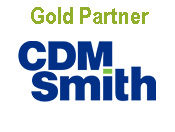Building Code and Zoning Compliance Under Chapter 21E
By: James J. Decoulos, PE, LSP, Decoulos & Company, and LSPA Loss Prevention Committee One of the issues the LSPA Loss Prevention Committee has been focusing on this year is the increasing importance of local municipal law and how it impacts our practice. Local bylaws and ordinances can be adopted and enforced through building departments, conservation commissions, boards of health, planning boards, and zoning boards of appeal. The enforcement of building codes, ordinances, and zoning bylaws falls under the jurisdiction of the zoning enforcement officer, who is usually the building inspector, building commissioner, or a member of the building department or inspectional services department.[i] These individuals or departments are responsible for permitting and oversight of all aspects of building construction, alteration and demolition to “safeguard public health, safety and general welfare…[provide] adequate light and ventilation, energy conservation, and safety to life and property from fire and other hazards attributed to the built environment, and to provide safety to fire fighters and emergency responders during emergency operations.”[ii] This jurisdiction extends to the “rehabilitation and maintenance of existing buildings.”[iii] They are also responsible for management and oversight of compliance with the state electric, gas, and plumbing codes. Lastly, building departments act as custodians of all records, plans, and documents related to building functions and safety for individual properties. The work of an LSP may cross into the local and zoning bylaw arena during response, containment, and exposure pathway mitigation measures. Many municipalities have implemented local control over soil explorations and monitoring well installations, soil excavation and transport, management of hazardous building materials prior to demolition, noise abatement, dust mitigation, and floodplain and groundwater protection. It may be helpful to contact the local building department to identify if any local bylaws, ordinances, or codes might apply to a proposed response action. On larger projects, a zoning compliance officer or architect may lead this effort and it is important to communicate these concerns to that project liaison. For example, mitigating vapor intrusion pathways may involve coordination and communication with a building inspector or building department. Sub-slab depressurization (SSD) systems can impact existing mechanical and plumbing systems within a building and cause backdrafting, which has the potential to cause the deadly buildup of carbon monoxide and other gases. For these reasons, MassDEP recommends obtaining all local permits and approvals as the first item on the checklist for planning and installing SSD systems.[iv] Section 8.0 of Appendix IV of MassDEP’s October 2016 Vapor Intrusion Guidance (Policy WSC-16-435) includes a section dedicated to evaluating backdrafts and other building pressure issues when designing SSD systems. On larger projects, these matters are often best left to qualified engineers who specialize in mechanical, electrical, and plumbing systems and understand how SSD systems may impact the ventilation and energy efficiency of a building, and what building codes may need to be addressed.[v]
The American Society of Heating, Refrigerating and Air-Conditioning Engineers (ASHRAE) is a leading source of technical and educational information on heating, ventilating, air conditioning, and refrigeration.[vi] ASHRAE is a co-author and developer of the Indoor Air Quality Guide, an excellent resource on understanding building science and performance.[vii] The guide discusses procedures to maintain proper building pressurization, how to control the intrusion of vapors from subsurface contaminants, and how to properly vent combustion equipment. ASHRAE standards are also cited in several sections of the State Building Code.
In addition to traditional building code compliance, LSPs may be required to address how SSD and passive venting systems can interact with the Stretch Energy Code. The Stretch Code is an appendix to the State Building Code that allows cities and towns to implement more rigorous energy efficiency requirements in both residential and commercial buildings.[viii] Tighter and more energy efficient buildings will require more understanding and coordination of how oil and hazardous material vapors are mitigated. Although not required by the MCP, it may be helpful to inform the building department of any active or passive venting system that supports either a temporary or permanent solution. Submitting design or as-built plans of venting systems to the building department will allow future property owners, designers, and contractors to better maintain vapor mitigation measures and allow for the synergy of improving building energy efficiencies with the protection of public health. [i] General Laws Chapter 40A, Section 7; Chapter 143, Section 3; and the State Building Code 8th Edition, Section 103. The Massachusetts Contingency Plan refers to these individuals as Building Code Enforcement Officials. See 310 CMR 40.1403(7)(a)(4). [ii] State Building Code 8th Edition, Section 101.3. [iii] Ibid, Section 101.2(2). [iv] Vapor Intrusion Guidance, Site Assessment, Mitigation and Closure Policy , WSC#16-435, Massachusetts Department of Environmental Protection, October 14, 2016; Appendix IV, page IV-14. [v] For an excellent visual representation of how the “stack effect” can affect a building’s performance, see Allison A. Bailes’ blog and photo of a Boston building under construction at http://www.energyvanguard.com/blog-building-science-HERS-BPI/bid/74335/The-Stack-Effect-in-Plastic. [vii] Indoor Air Quality Guide: Best Practices for Design, Construction and Commissioning; Developed by: American Society of Heating, Refrigerating and Air-Conditioning Engineers, The American Institute of Architects, Building Owners and Managers Association International, Sheet Metal and Air Conditioning Contractors’ National Association, U.S. Environmental Protection Agency, U.S. Green Building Council; 2009. https://www.ashrae.org/resources--publications/bookstore/indoor-air-quality-guide. |


































